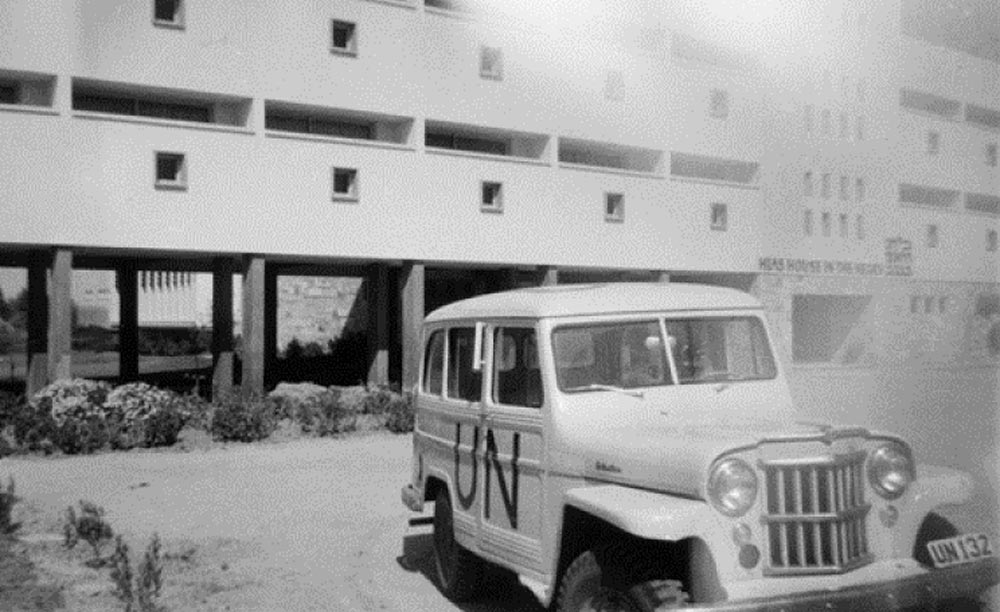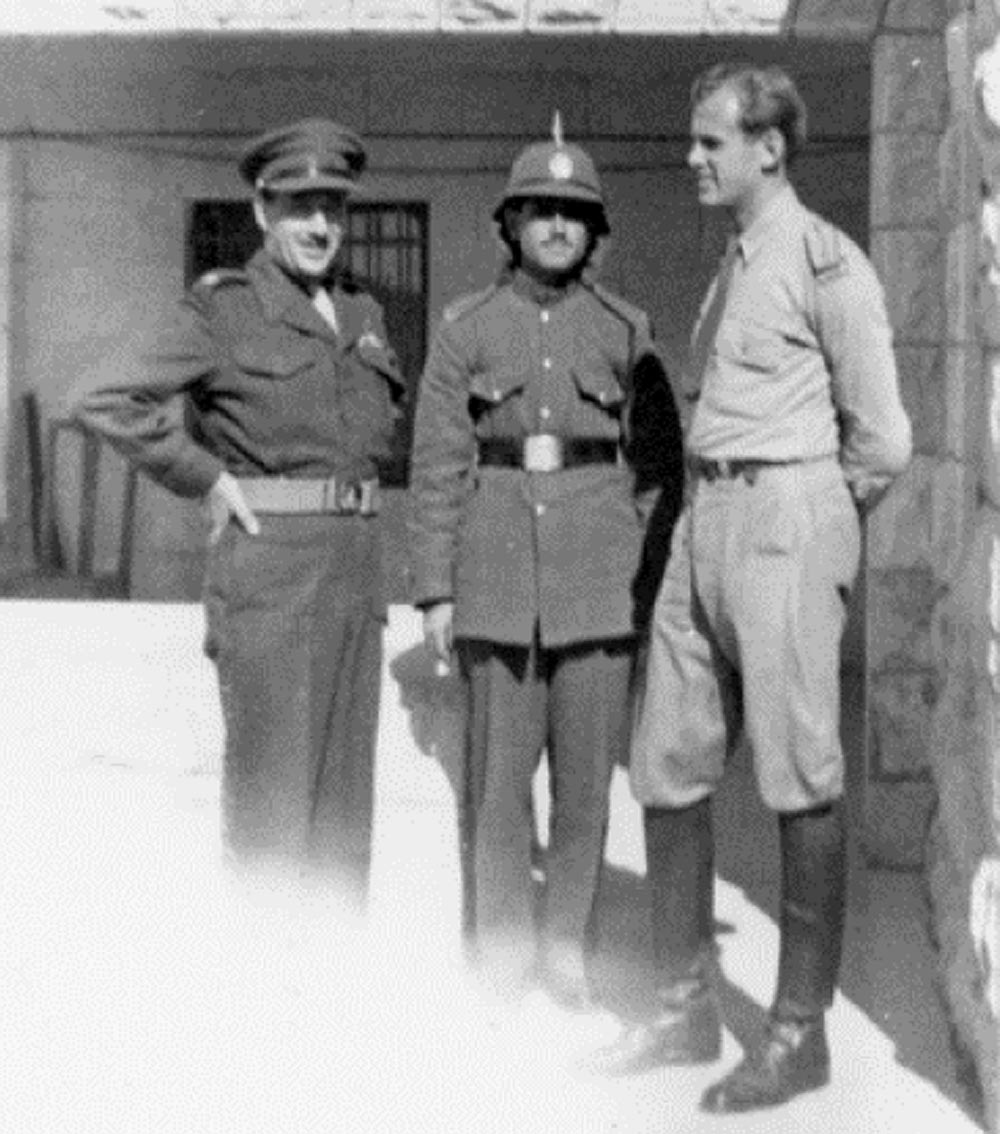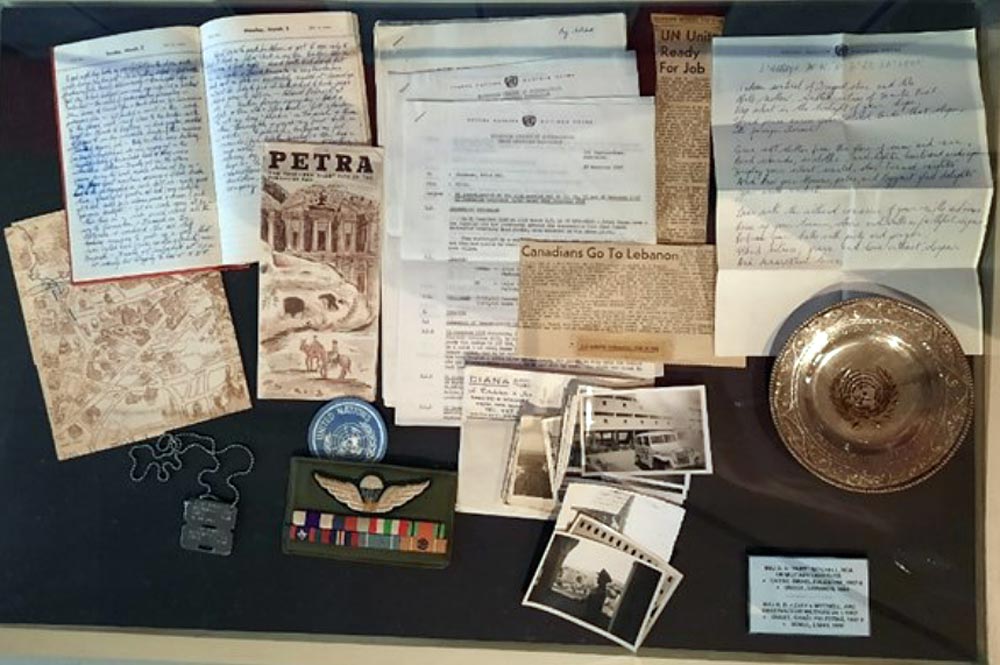

Jonathan Ferguson
Stag Special
The RCA Museum is proud to present In the Service of Peace: Canada’s Peacekeepers.
This exhibit traces the history of Canadian peacekeeping by telling the stories of individual soldiers. This year marks both the 75th anniversary of the first United Nations peacekeeping operation, as well as the 35th anniversary of the Nobel Peace Prize awarded to UN Peacekeepers.
Many Canadians identify the Suez Crisis of 1956 and the formation of the United Nations Emergency Force (UNEF) as the beginning of UN peacekeeping. While UNEF was the first armed peace mission, the UN had employed unarmed military observers to monitor peace agreements since 1948.
The first United Nations peacekeeping mission was the UN Truce Supervision Organization (UNTSO), which has operated in the Middle East since May 29, 1948 and continues to monitor the ceasefire in Israel and the Palestinian territories.
Canada began participating in UNTSO in February 1954, when MGen E.L.M. “Tommy” Burns took command of its UN Military Observers (UNMOs), including three other Canadian officers.
A small number of Canadian officers continue to participate in UNTSO today under Op JADE, which is Canada’s longest-running overseas commitment. Our exhibit In the Service of Peace highlights two Gunners who served with UNTSO: Maj G.D. “Duff” Mitchell in the 1950s and LCol Jack Pleasance in the 1980s.
The RCA’s Maj Mitchell served with UNTSO from 1957 until he travelled to Beirut as a co-founder of the United Nations Observer Group in Lebanon (UNOGIL) in 1958. A display case in the exhibit highlights some of Maj Mitchell’s personal items from this time.
These include his identity discs, journal, ribbons and badges, memorabilia from Jerusalem and Petra, photographs, newspaper clippings and official UN reports.
As an UNMO, Maj Mitchell was involved in several investigations into truce violations. These included shootings and intruders crossing the armistice line.
For example, Maj Mitchell spent much of Feb. 17, 1958 investigating a shooting the day before, when three Israeli security personnel were wounded after crossing the ceasefire line in Jerusalem. As he recorded in his journal, he nonetheless found opportunities for socializing:
“Awoke with the Old City muezzin calls [to prayer] at 0500? & had trouble sleeping in till 0730. Over to MAC [Mixed Armistice Commission] to find excitement about Mt. Scopus shooting so was ordered to join Flint at Augusta Victoria Hospital. Had jeep trouble halfway up with Graftiaux’s jeep but radio relays through McGregor got help from Govt Ho [Government House]. Then sat in the blazing sun manning a handset from 1000 to 1200 – while Flint & Connel ran around taking evidence.
“More jeep swapping & finally over to G.H. for lunch & caught mail run to Gaza with postcards & a cryptic letter home. Back to MAC with Norstrom to wait instructions. There is quite a flurry over Scopus & other shootings. Perhaps the Jordan-Iraq union has stirred the pot again. Anyway things were getting too dull! After lunch at G.H. I drove Norstom back & then had to standby there all afternoon. Went over to Y[MCA] for a refreshing shower & met H. Sa-cher so had drinks with him at Shemesh Restaurant. Later I went over to Baxerres’ place for a party. It was a lot of fun & he was a good host serving various delicacies & of course French wine.”
At other times, Maj Mitchell manned lonely Observation Posts (OPs) to report on the actions of hostile parties. His busy life in Jerusalem contrasts with the austerity, isolation and boredom at an OP in the Golan Heights separating Israel from Syria. In his diary entry for March 18, 1958, Mitchell wrote:
“Up at 0600 to pack for 7:30 departure to MAC [Mixed Armistice Commission] Office, Kuneitra [Syria] & OP Bravo. The road (rough track) from the Bustams House to the OP was really rough in spite of improvement work. No wonder that the UNMOs bogged or rolled over 5 Jeeps during the winter. Geo[rge] Chambers [US Marine Corps] (my OP mate for this tour) has been in Syria for 10 months & has suffered through the growing pains of OPs along the Jordan-Hula valley since last August. They had a rough time with streams flowing through the tents and the wind blowing the tents down on top of them during the night. Many UNMOs slept in the jeeps as the safest, driest place. Bravo is well equipped with an inside radio station & high tower outside. Geo[rge] is a fairly good cook & with NTR [nothing to report] we had far too much to eat. At night the town of Dan [Israel] & the clusters of surrounding kibbutzim lit up the whole valley which makes a striking contrast to the dark mountains of Lebanon & Syria to the west & east respectively. At night Israeli Police cars with searchlights pa-trolled the fields below the OP.”
In retirement, Maj Mitchell authored RCHA – Right of the Line, a history of The Royal Canadian Horse Artillery, in 1986. The RCA Museum is honoured to tell the story of peacekeeping through the eyes of Canada’s Gunners like Maj Mitchell in the exhibit In the Service of Peace: Canada’s Peacekeepers.
The Canadian Peacekeeping Veterans Association is compiling personal reflections to mark the 75th anniversary of UN peacekeeping. Visit https://www.cpva.ca/ to read them or contribute your own story.
Maj Mitchell’s UN vehicle at the HIAS House hotel in Beersheba in Israel’s Negev Desert.
Maj Mitchell (left) as an UNTSO MO, with a Jordanian police officer (centre) and a Swedish cavalry officer (right).
Maj Mitchell’s belongings in the exhibit In the Service of Peace, reflecting his time with UNTSO. These include his journal (top left), official UN reports (top centre), the manuscript of a poem (top right) and his personal photographs (bottom centre).


